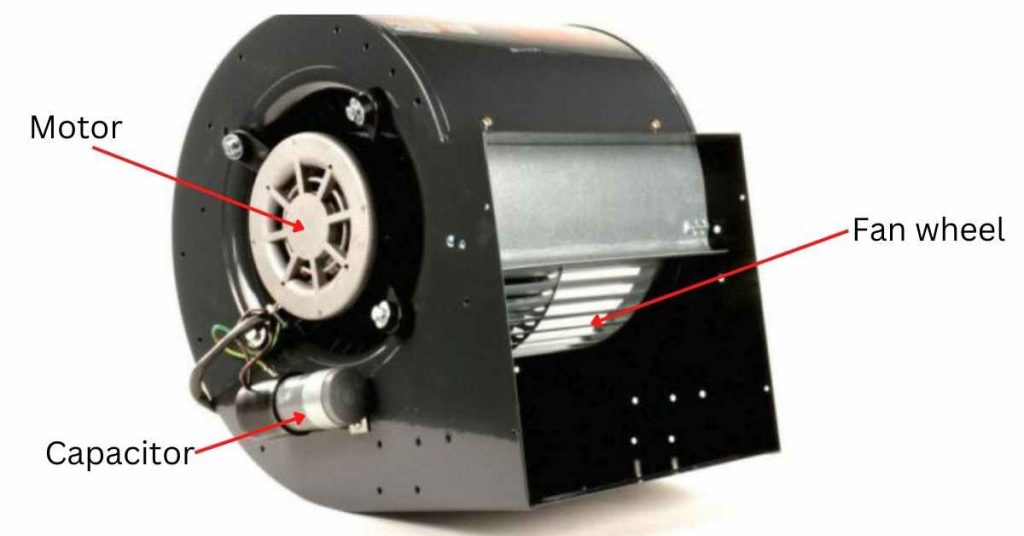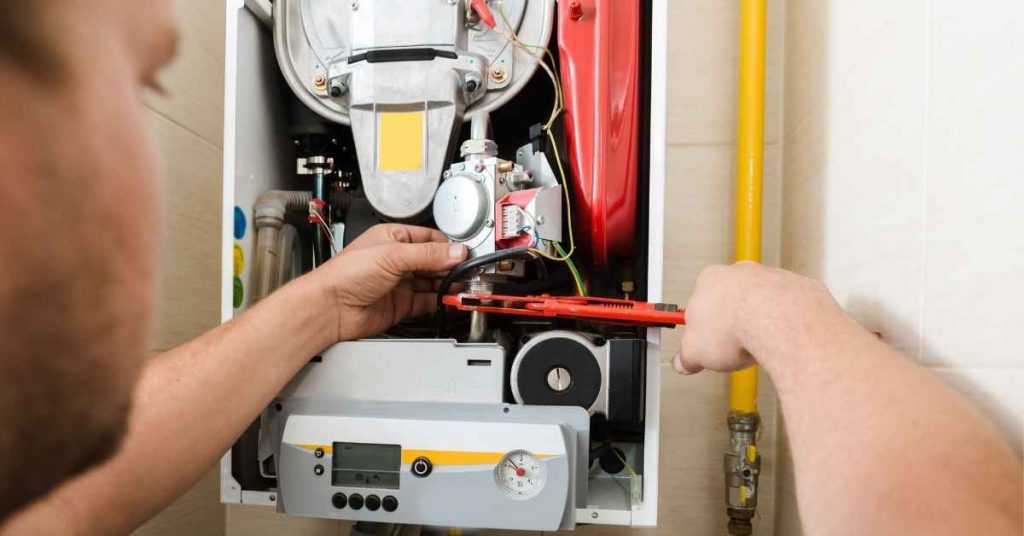
A furnace blower is a vital component of a heating system that plays a key role in distributing warm air throughout a home or building. Here’s a summary of what a furnace blower is and its primary functions:
1. Definition:
- A furnace blower, also known as a furnace fan or air handler, is an electric motor-driven device located within the HVAC (Heating, Ventilation, and Air Conditioning) system. Its primary purpose is to circulate heated air produced by the furnace throughout the building’s ductwork and into the living spaces.
2. Functions:
- Air Circulation: The primary function of the furnace blower is to circulate warm air generated by the furnace throughout the home. It draws in cool air from the return air duct, passes it over the furnace’s heat exchanger, and then pushes the heated air into the supply air ducts. This process ensures even heating throughout the building.
- Air Filtration: Many furnace blowers are equipped with a filter that helps remove airborne particles, such as dust, pollen, and pet dander, from the circulated air. This improves indoor air quality.
- Energy Efficiency: Furnace blowers can also contribute to energy efficiency by distributing warm air effectively. Proper airflow prevents temperature imbalances, reduces the need for frequent heating cycles, and helps maintain consistent comfort.
3. Types of Furnace Blowers:
- There are two main types of furnace blowers:
- Single-Speed Blower: These blowers operate at a fixed speed, typically at full capacity when the heating or cooling system is on.
- Variable-Speed Blower: Variable-speed blowers can adjust their speed based on the heating or cooling demands. They operate more efficiently and quietly, providing better control over indoor comfort.
4. Blower Control:
- The furnace blower is controlled by the thermostat. When the thermostat detects a temperature discrepancy, it signals the furnace to heat the air and the blower to circulate it. The blower continues to operate until the desired temperature is reached.
What Does the Blower Motor Do in a Furnace?

A furnace is made up of 3 main part/components:
- Heat exchanger
- Combustion chamber
- Blower
An electric furnace looks a little different (contains an electric heating coil) but the principle of heating is almost the same as a natural gas furnace.
Most people don’t know that a furnace blower is used during both heating and cooling operations. If you look keenly, you will notice that the evaporator (cooling coil) is also connected to the furnace.
When used to cool the house, the blower pulls hot air from the house through the return air duct and pushes it across the evaporator coil. The cold refrigerant inside the evaporator coil absorbs heat from the air, cooling it in the process.
When used to heat the house, the blower pulls cold air from the house, pushes it across the heat exchanger (basically heated coils) where it absorbs heat and gets heated in the process. The heated air is then blown out of the furnace to the house via the supply air ducts.

In houses with central HVAC systems, air moves around the house through ductwork. A house will have return air ducts and supply air ducts.
Return air ducts are the ones responsible for carrying cold or hot air from the house to the furnace for heating or cooling. If you have a vertical furnace, the return air will enter it from the bottom. In horizontal furnaces, the return air enters the furnace from the side.
Supply air ducts are responsible for carrying heated or cooled air from the furnace to the house. In vertical furnaces, return air ducts are connected from the top while in horizontal furnaces they are connected from the side opposite from return air ducts.
The air in the house contains dust, pollen, pet fur, hair, dander, lint among other impurities. For that reason, an air filter is installed in the return air duct to trap those impurities thereby preventing them from accumulating inside the furnace and being circulated back to the house.
When the thermostat calls for heating and cooling, the furnace burner (or heater) comes on immediately but the blower delays for a while. The delay allows the heat exchanger or element to heat up sufficiently to prevent blowing cold air in the house.
Once the heat exchanger is hot enough, the blower motor kicks in. The blower fan rotates in such a way that they cause a pressure difference inside the return air duct.
That pressure difference causes the air inside the house to be sucked inside the duct through the return air vent.
Once the air comes into contact with the heat exchanger, it absorbs heat from it and is then blown out of the furnace and back to the house via the supply air ducts. As you can see, the furnace blower pulls air from the house and also delivers the same air back after cooling or heating.
Although I have mentioned that the thermostat controls the temperature of the house by sending a signal to the furnace to come on or turn off, there is another switch inside the furnace which controls the operations of the furnace.
A fan limit switch is a furnace component which determines when the furnace blower kicks in and when it turns off. It controls the release of hot air to your house by turning the blower motor on or off.
The limit switch also turns the furnace off to prevent it from overheating. That happens in instances like when you forget to change the furnace filter, meaning that there is no air flowing to the furnace, forcing the motor to work extra harder.
Types of Furnace Blower Motors

Running a furnace is not exactly cheap. Apart from consumption of natural gas, we also need electricity to run the blower motor.
A blower motor is like a car. The faster a car moves (pressing hard on the acceleration pedal) the more gas it consumes. Likewise, the faster a motor runs, the more energy it consumes.
There has been constant improvements in the HVAC industry to ensure that motors are as energy-efficient as possible. There are 3 types of furnace blower motors:
- Single-speed
- Multi-speed
- Variable-speed
Single-speed blower motors as their name clearly implies have only one speed. They are either running at 100% or they are off, operating on all-or-nothing principle. As such, single-speed motors are energy inefficient and are fast being phased out.
Multi-speed blower motors are an improvement to single-speed motors. They initially run at 100% when you need an instant injection of heat in the house but afterwards adjust the speed downwards and just maintains the temperature of the house at low speeds.
Furnaces with multi-speed motors will on most times be on the lower speed settings meaning that they will need less power to run. They are therefore more energy efficient than single-speed motors.
Variable speed blower motors are the latest motor technology and are the most energy efficient blower motors. As their name implies, the speed of the motor is automatically adjusted (varied) as heating and cooling needs be.
Apart from being energy efficient, they are even quieter than the predecessors. The furnace kicks in quietly and after the initial heat output fade into the background.
Furnaces with variable speed motors run at the lowest speed possible and are also excellent in lowering humidity during the summer. The filters they use are also fantastic in cleaning the indoor air.
Furnace blower motors are either direct drive or belt drive. Direct drive motors connected directly to the furnace blower wheel while belt drive are found in very old furnaces where the motor pulley is connected to a fan pulley which is mounted on a shaft to turn the blower wheel.
How Do I Know if My Furnace Blower is Bad?
So, what are the signs of a bad furnace blower? Or how do you know if your furnace blower is bad?
The following are some the tell-tale signs:
1. Poor Temperature Regulation
As I mentioned, the function of a blower motor is to pull air from the house so that it can be heated or cooled and then deliver the air back to the house through the ducts. If that is not happening, it is highly likely that the furnace blower is not working.
Depending on how serious the problem is, you can have weak airflow or none at all. That on its own is however not a reason to conclude that the blower is bad as the problem could be caused by something else altogether.
2. Overheating
A good sign that your furnace blower is overheating is a burning smell. If the smell is especially concentrated where the furnace is located, you can almost conclude that the motor is the problem.
An overheating furnace can be caused by several factors one of them being a clogged/dirty air filter. When the filter is not changed, it restricts the flow of air to the furnace thereby forcing the blower to worker harder and hence overheat.
Overheating is a serious problem since it can completely damage the furnace resulting in expensive repairs/replacements. It can even cause a fire to break out.
3. High Energy Bills
When something is interfering the with proper working of a furnace, it will keep turning on and off, running for long durations to keep up with the heating and cooling demands of the house. You would therefore expect energy consumption to shoot through the roof.
High energy bills can however be caused by other problematic appliances like an electric water heater. To conclusively determine whether the furnace blower is the problem, you have to tie this point with another point like overheating or unusual noises from the furnace.
4. Loud Unusual Noises from the Furnaces
Furnaces have their distinct noise which they make when they are running. However, if you hear loud rattling, banging, screeching or squealing noises coming from your furnace, there is something wrong with your furnace.
Screeching/squealing noises will mostly indicate that there are bearing problems in direct drive furnaces or belt problems in belt-drive furnaces. On the other hand, rattling or knocking noises are a sign of a damaged or broken parts.
Wrap Up
And basically that is everything about furnace blowers. I hope that you found this article to be helpful.
